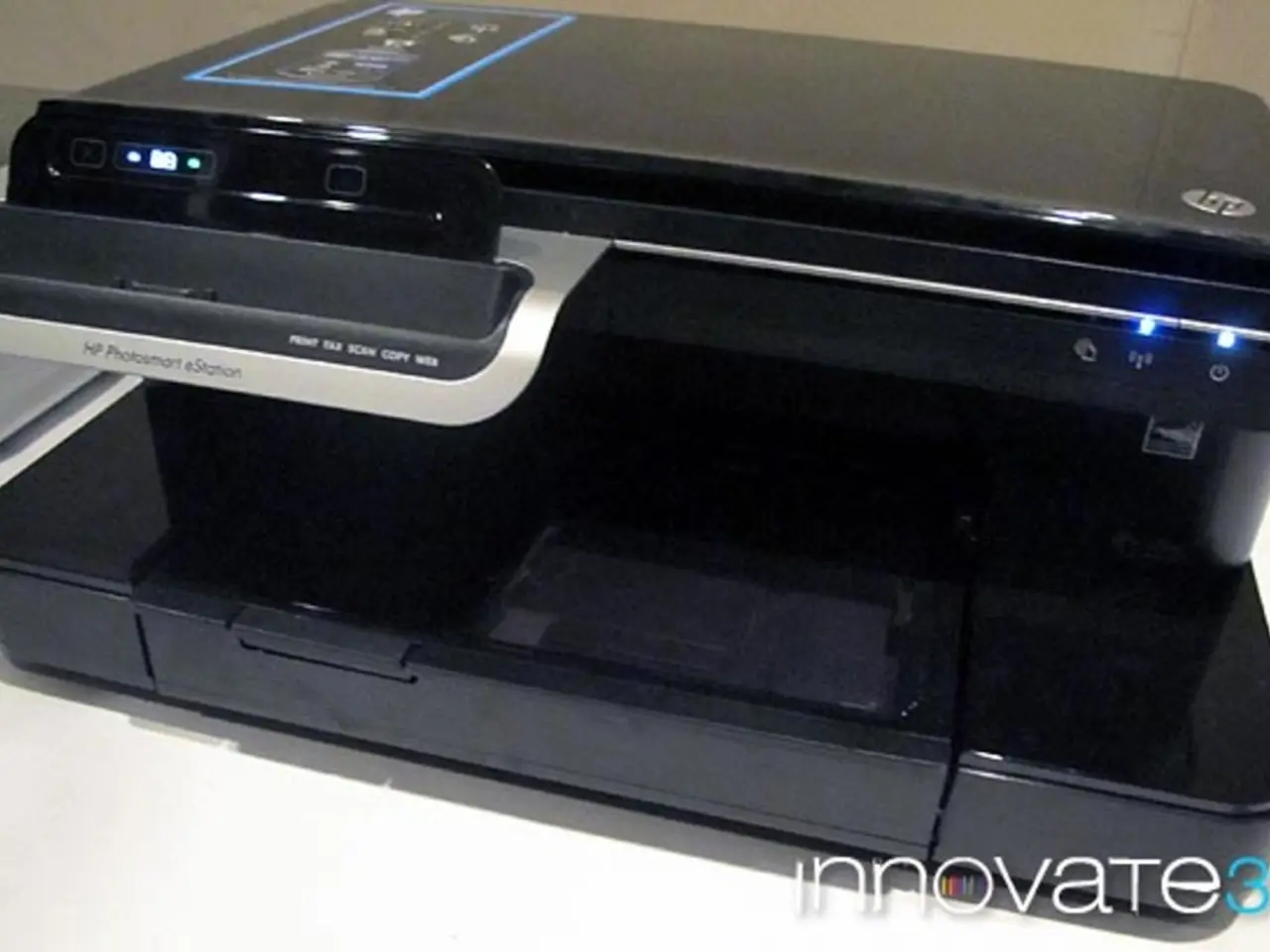Advanced Printing Technique: Laser Direct Imaging - Key Benefits Unveiled
In the realm of Printed Circuit Board (PCB) manufacturing, two primary methods stand out: traditional photolithography and the more modern Laser Direct Imaging (LDI). While both techniques serve the same purpose, they differ significantly in their approach to transferring the PCB pattern onto the substrate.
Traditional Photolithography
Traditional photolithography utilizes photo masks, also known as film masks, to expose a photoresist, a light-sensitive material, onto the PCB. The process involves multiple steps, including the application of dry-film photoresist, mask exposure, and etching processes.
During the exposure process, a positive image is created when UV light is made to hit the material in the regions where the copper must be removed. Subsequently, etching is carried out to remove unwanted copper on the board. The conventional PCB photolithography process also includes a step called Scrubbing, similar to LDI, for surface preparation of the cores.
Despite its widespread use, traditional photolithography has its limitations. It can be slower due to the need for mask preparation and alignment steps, and it may not be as flexible for rapid prototyping or frequent design changes. Moreover, the use of photo masks can lead to poor quality images due to fluctuations in temperature and humidity.
Laser Direct Imaging (LDI)
LDI, on the other hand, offers a more streamlined and efficient approach. It eliminates the need for photo masks and manual alignment, resulting in faster processing times and on-the-fly pattern changes.
In LDI, a computer-controlled high-resolution laser beam is used to directly expose the photoresist without masks. This method enables precise imaging of inner and outer PCB layers, reducing cost and improving yield in high-density multilayer circuits. LDI is particularly crucial for manufacturing PCBs with fine lines and spaces (under 20 μm), such as those used in smartphones, 5G infrastructure, automotive radar, and advanced computing devices.
LDI's process includes steps such as Scrubbing, Lamination Photoresist, Loading CAM files, Laser printing, Etching, Photoresist strip, and Drying. The circuit pattern is printed onto the board by the CNC laser in the Laser printing step. LDI results in more precision and consistent imaging as compared to photo methodology, with enhanced resolution, precision positioning, perfect alignment, and image trace widths.
Comparison and Suitability
While LDI offers superior accuracy, faster turnaround, and cost efficiency for complex, high-density applications, traditional photolithography suits more conventional, large volume manufacturing where mask costs can be amortized. LDI is preferred by PCB manufacturers, especially for HDI circuit fabrication, due to its elimination of the phototool and associated costs, reduction of image degradation factors, and improved alignment capabilities.
In conclusion, both traditional photolithography and LDI have their unique strengths and are suited to different manufacturing scenarios. Understanding these differences can help PCB manufacturers make informed decisions based on their specific needs and requirements.
References: [1] [Link to Reference 1] [2] [Link to Reference 2] [3] [Link to Reference 3] [4] [Link to Reference 4]
Technology and data-and-cloud-computing play crucial roles in the evolution of Laser Direct Imaging (LDI) in Printed Circuit Board (PCB) manufacturing. LDI utilizes a computer-controlled high-resolution laser beam, eliminating the need for photo masks, providing faster processing times and enabling on-the-fly pattern changes with enhanced precision, thanks to the streamlined approach given by technology and data-and-cloud computing. This contributes to increased cost efficiency and yield in high-density multilayer circuits used in advanced computing devices, 5G infrastructure, and smartphones.




